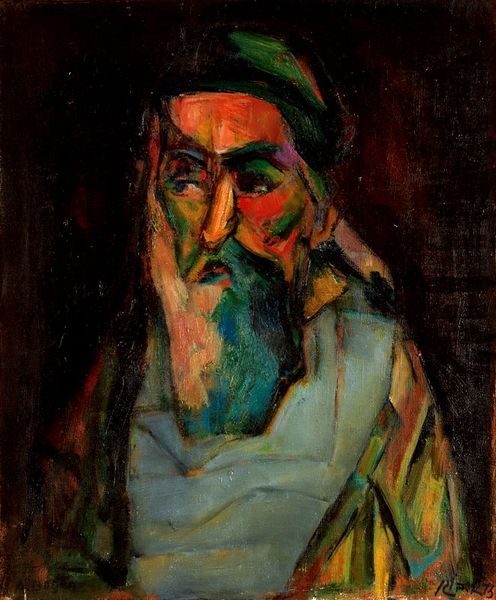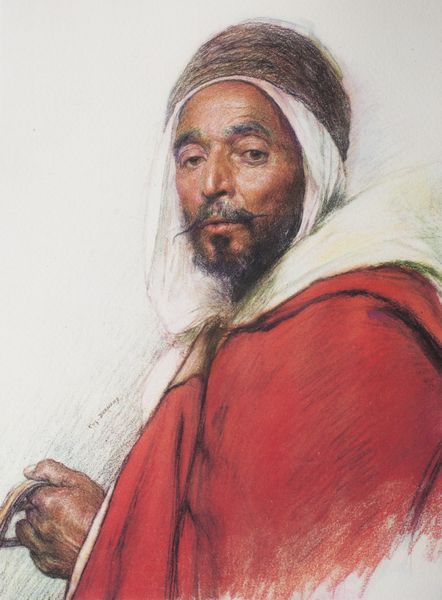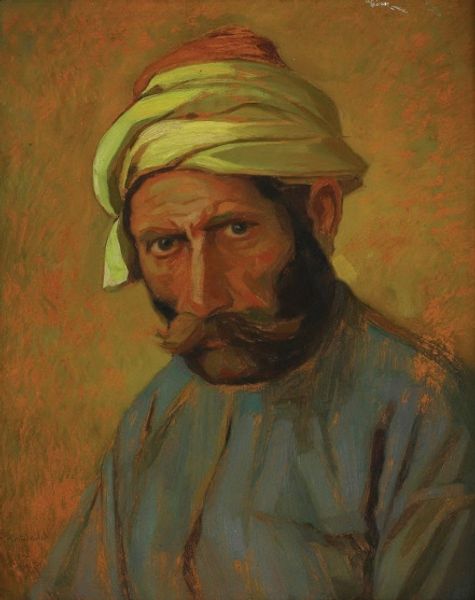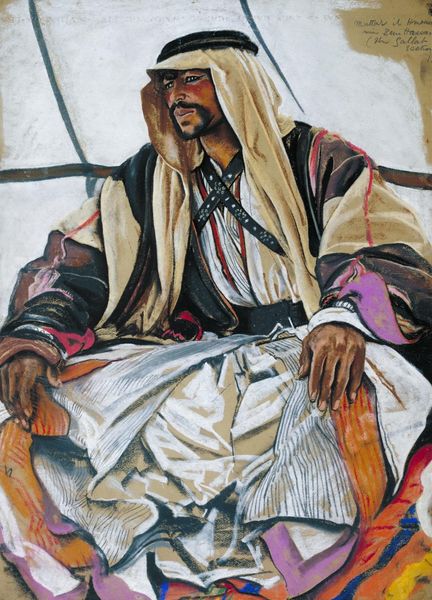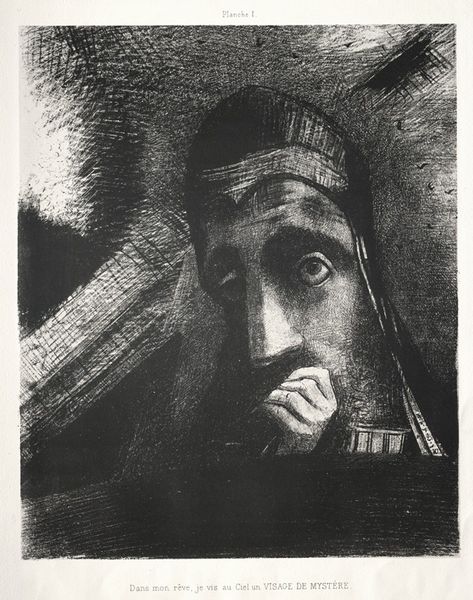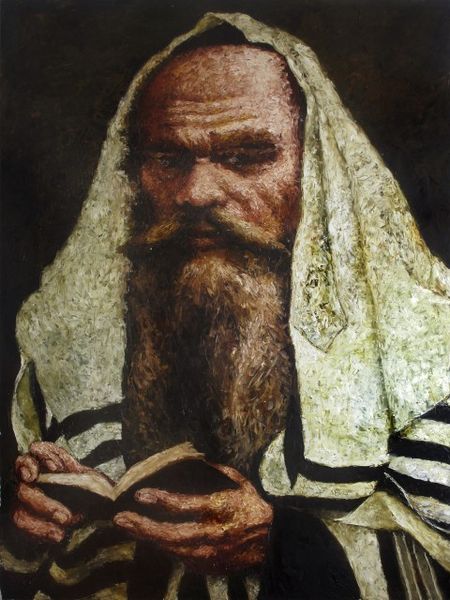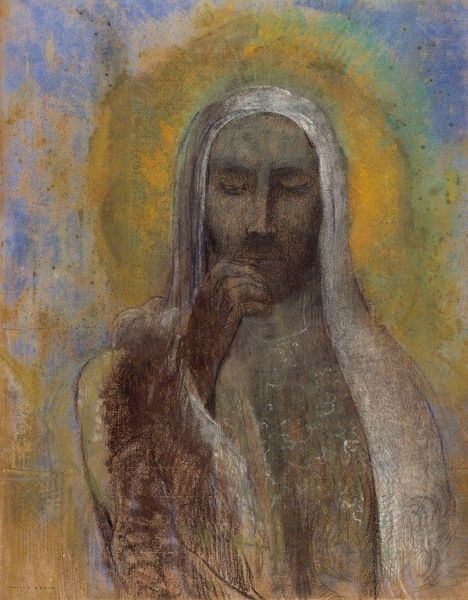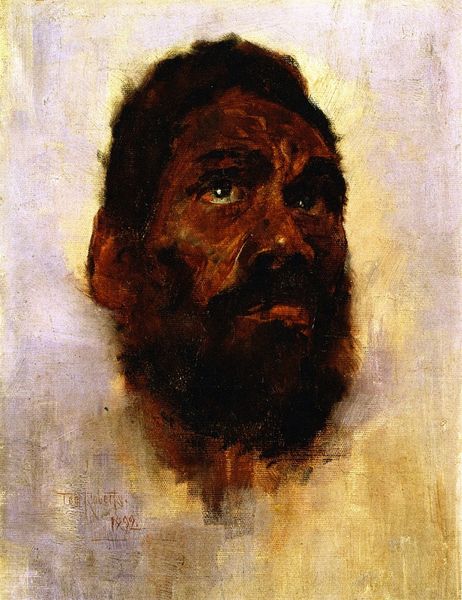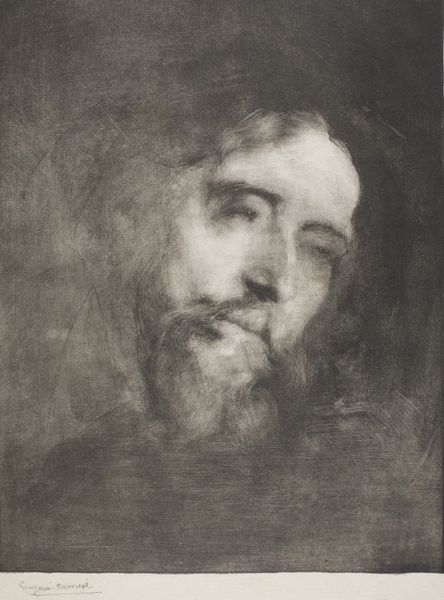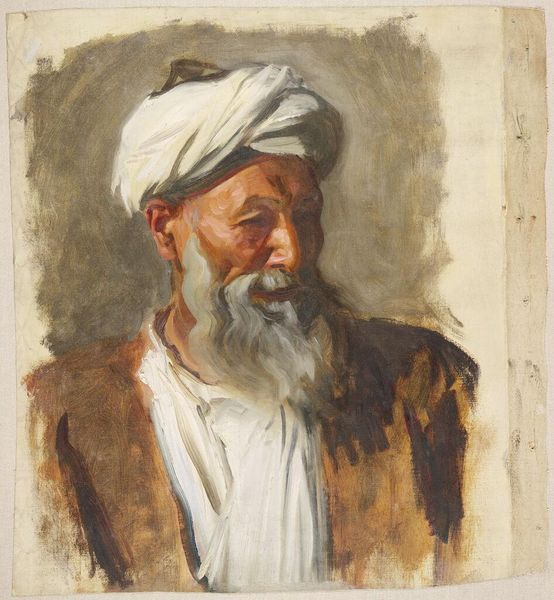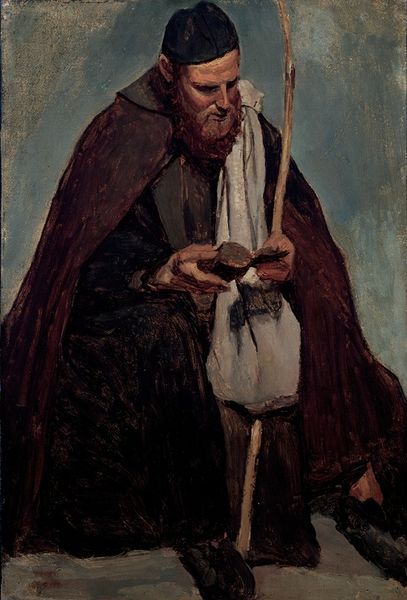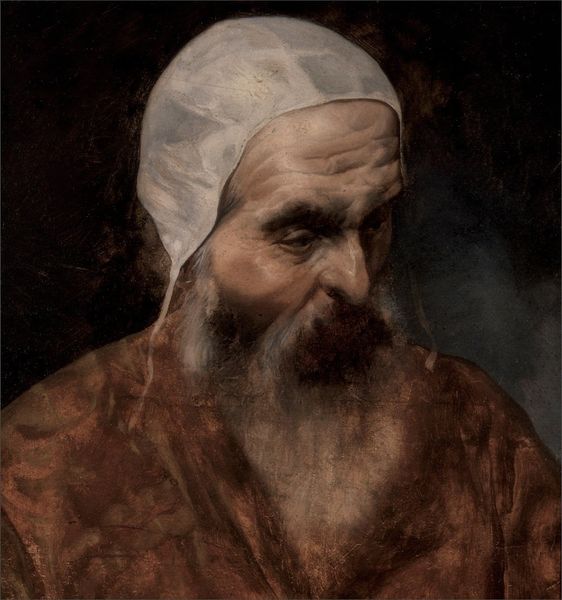
painting, oil-paint
#
portrait
#
painting
#
oil-paint
#
figuration
#
oil painting
#
portrait reference
#
realism
Copyright: Mahmud Taghiyev,Fair Use
Curator: So, here we have "Portrait" by Mahmud Taghiyev, an oil painting. Editor: My initial sense? Melancholy. The colors, the downcast gaze… there's a real weight to it. It almost feels like you're intruding on a private moment. Curator: Yes, the pathos is quite palpable. Though undated, this work reflects a deep interest in realism and figuration. It prompts critical questions about the subject's identity within larger sociopolitical histories, specifically concerning representations of Eastern figures in art. Editor: Totally. The turban, for example. Is it meant to exoticize, or does it speak to something deeper, some connection to culture or spirituality? And that hand position… almost burdened. Curator: Exactly. It challenges us to move beyond surface readings. Think about orientalism, its problematic lens—how does that influence our perception? What power dynamics are at play when we view this figure, possibly coded as "other"? Editor: And Taghiyev, as the artist—where does he fit in relation to that power? Was he subverting expectations, reclaiming agency? I almost wish I knew who the subject was! Then you could overlay all sorts of narratives, real and imagined. I'm picturing him as some sage reflecting after hard day's labor. Curator: Knowing more about the subject, indeed, could shift our reading. But regardless, this work encourages viewers to confront preconceived notions and think intersectionally. Race, class, spirituality—all potentially intersect here. Editor: It also shows how an expression is able to reach another person on a completely emotional level that almost excludes culture. It’s like: have you ever felt that, yeah? Curator: Precisely. Its accessibility allows viewers to have that connection regardless of differences. Editor: I guess that’s why art is really here; sometimes you see an old painting, but you just *feel* something contemporary. Curator: Indeed. Perhaps reflecting the subject itself is a more universal aspect of the portrait that draws its audience to connect.
Comments
No comments
Be the first to comment and join the conversation on the ultimate creative platform.

